Check out the first blog in our Cookie Monsters series, How the Cookie Crumbles, for something to chew on and then read on for our five hacks to spoil your pet rotten without spoiling their diet!

1. A paw in the cookie jar
Staying within your pet’s Treat Allowance, plan to feed the same amount of one or two specific treat products every single day – food items that meet the Treat Trifecta criteria: have known caloric content, are consistent in size, and are low in calories. Using a small container as your pet’s daily cookie jar, count out the total number of treats allotted for the day and set the jar out in a convenient location for anyone in the family to access. This strategy will reduce the risk of inadvertently overfeeding the pet, especially if there are multiple household members offering treats.
2. Playing with their food
Enrich your pet’s life and strengthen the human-animal bond by teaching them tricks and playing games using their daily treat allotment. Food puzzles (AKA interactive toys or treat-dispensing toys) are also a great way to elevate the giving of treats into an engaging activity for your pet – and they have many other benefits to your pet’s health as well.
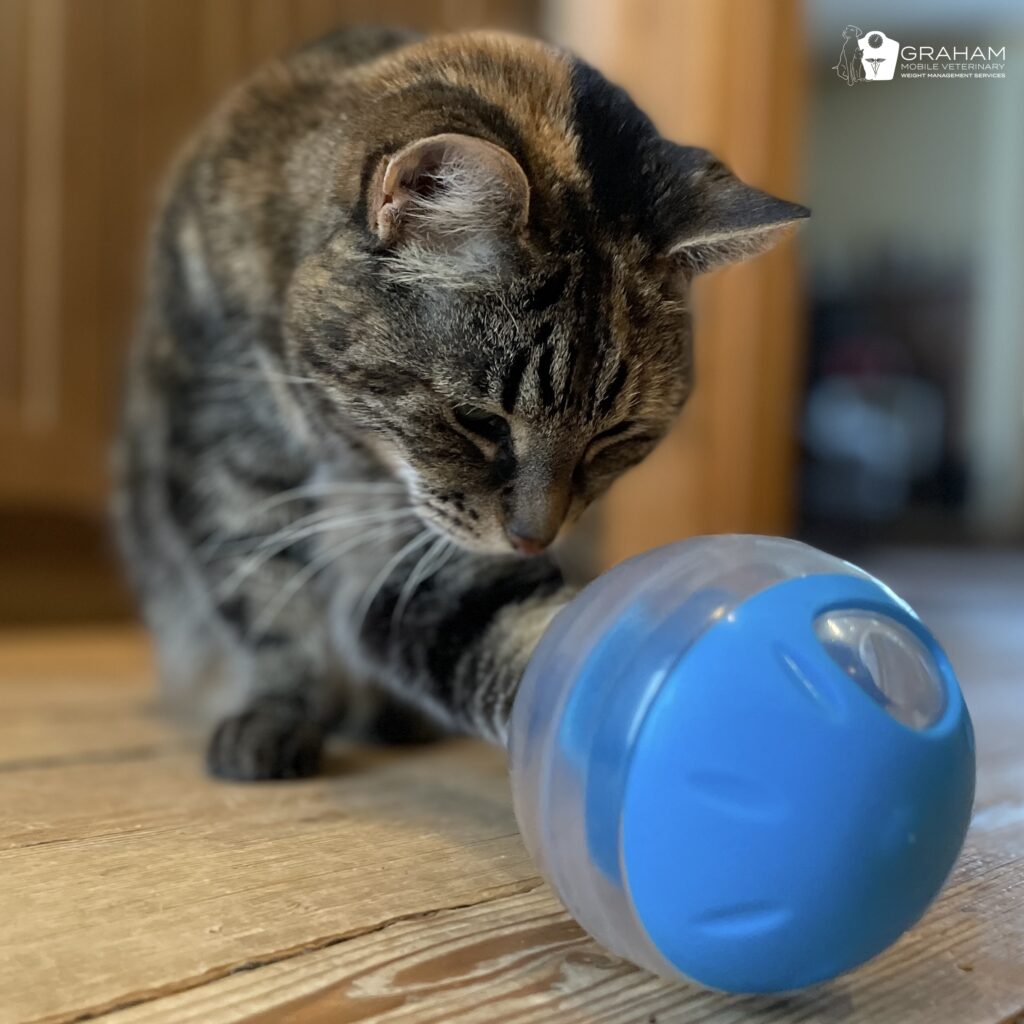
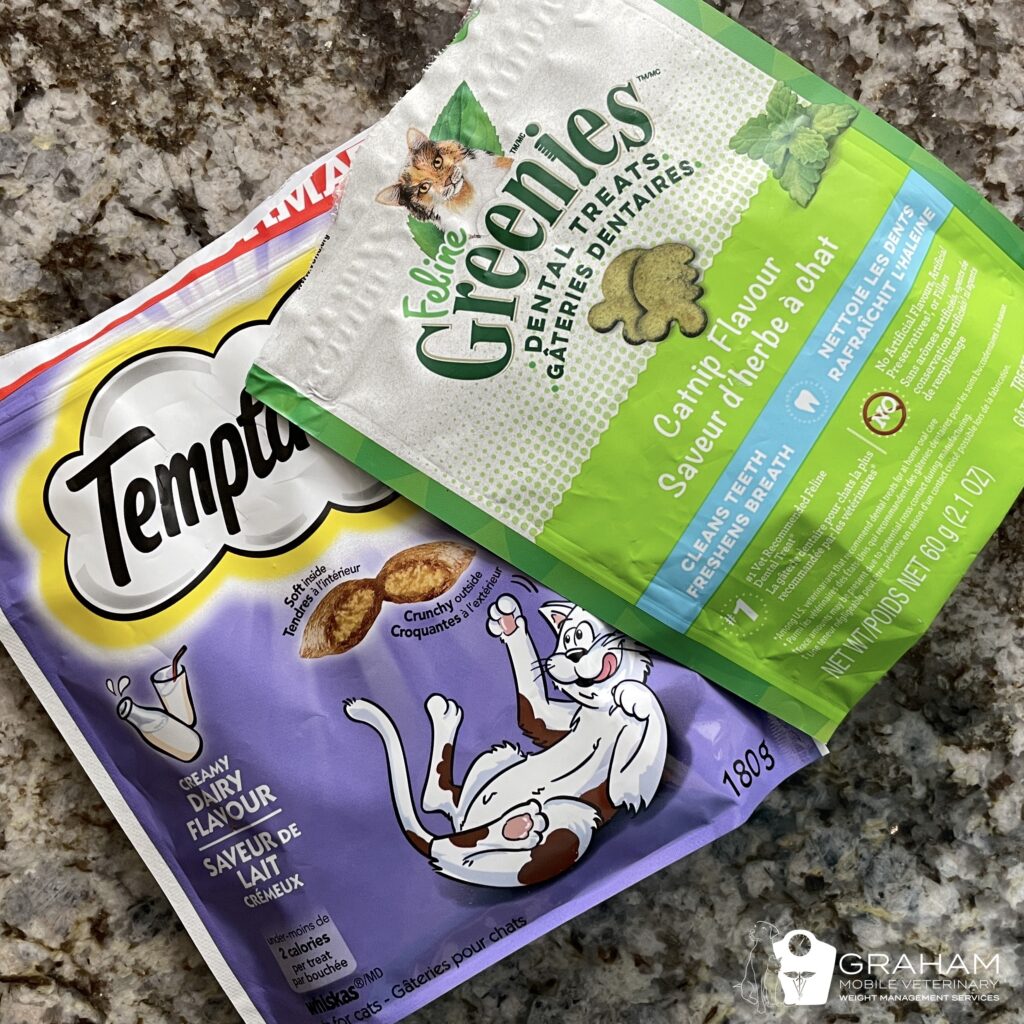
3. The cat’s meow
Cat treats are a fantastic option for dogs – yes, dogs! – as they are generally very low in calories, often less than 2 calories per treat, reducing the risk of exceeding the daily Treat Allowance. Along those same lines, for dogs that receive daily medication in Pill Pocket-type treats, use the cat version of these treats; the feline products contain considerably fewer calories – in the neighbourhood of 80% less! – relative to the canine options.
4. Creatures of habit
Rather than trying to get that certain family member to break the habit of feeding the pet from the table, simply modify how it’s done. With the guidance of your veterinary team, select a safe, low-calorie human food and place a dish on the table with a precise daily allotment of this treat, ideally weighed with a digital kitchen scale – for example, 50 grams of cucumber slices equates to only 8 calories. The pet can then be offered the treats from that dish rather than receiving a variety of potentially high-calorie foods from someone’s plate.
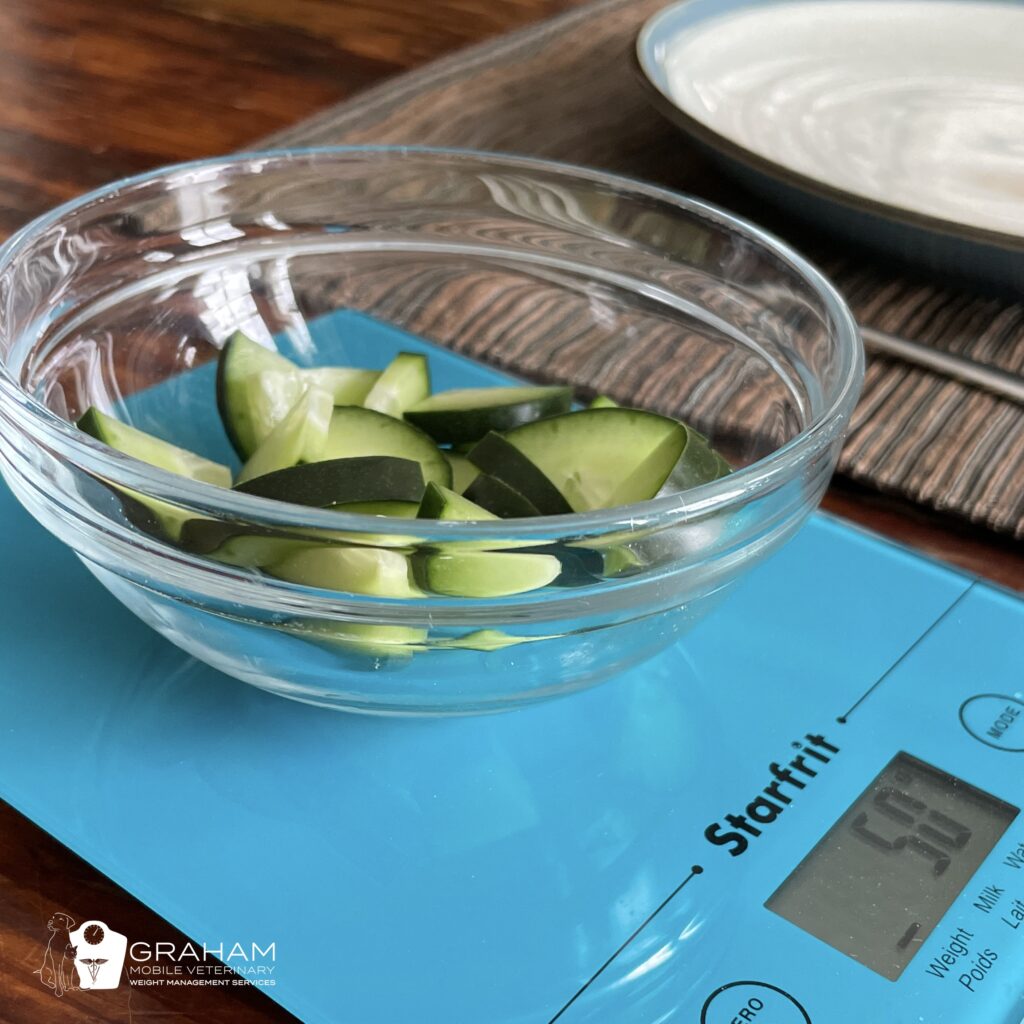
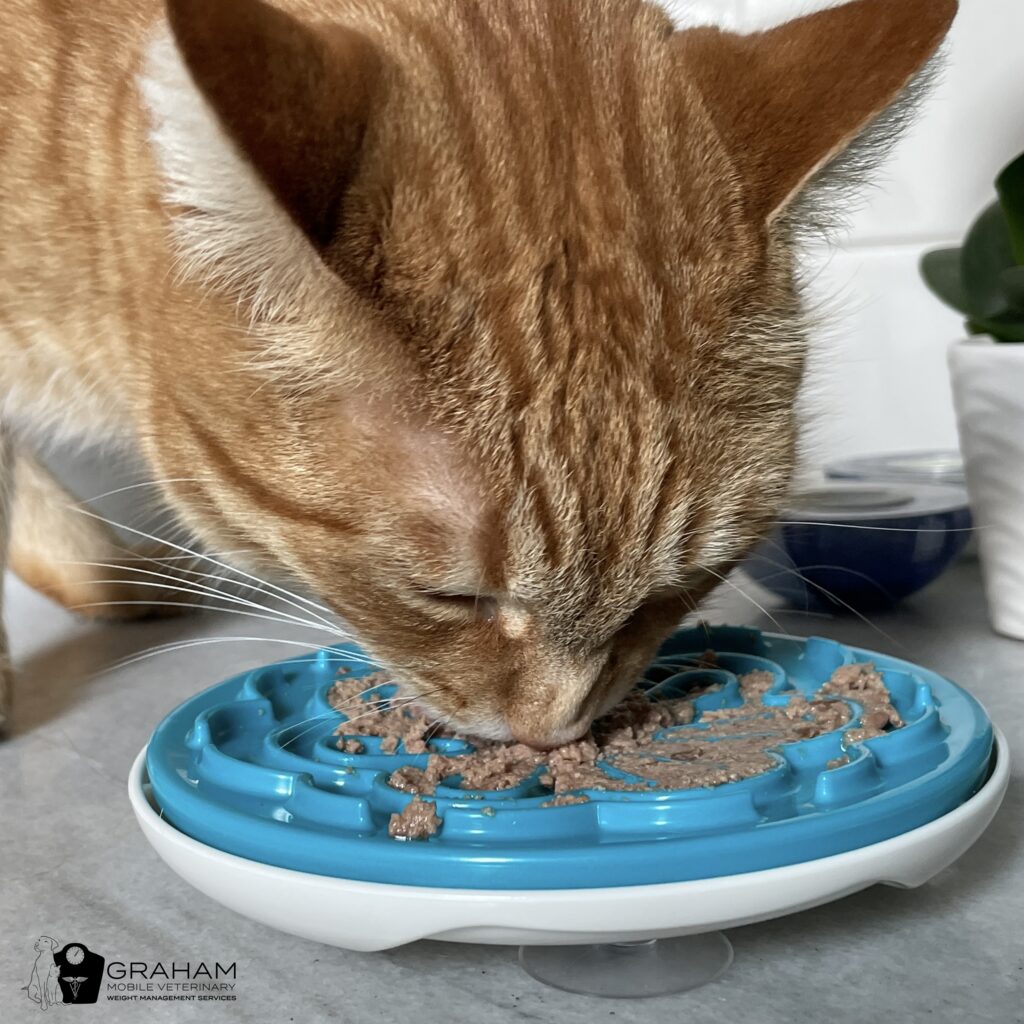
5. The act of giving
Many pets are indifferent to the treat itself and care more about the routine involved in its offering – for example, hand-feeding the food item and pairing that action with an endearment is what makes it special. For these pets, using their regular food as a treat is a simple and inexpensive solution that does not need to come out of their Treat Allowance! Set aside a portion of the pet’s daily kibble allotment or ask your veterinary team to help you factor some wet food into their diet for use as treats. The latter can be used to stuff a Kong or can be spread on a “lick mat” and these items can even be frozen to heighten the challenge for your pet.
Bonus hack: Nourish the human-animal bond
The stomach is not the only way to your pet’s heart – while it may appear that they are begging for treats, consider that your pet is most likely begging for your attention. Replace food rewards with other forms of attention – play time, physical affection, verbal praise – to strengthen the emotional connection you have with your pet and treat them like royalty!
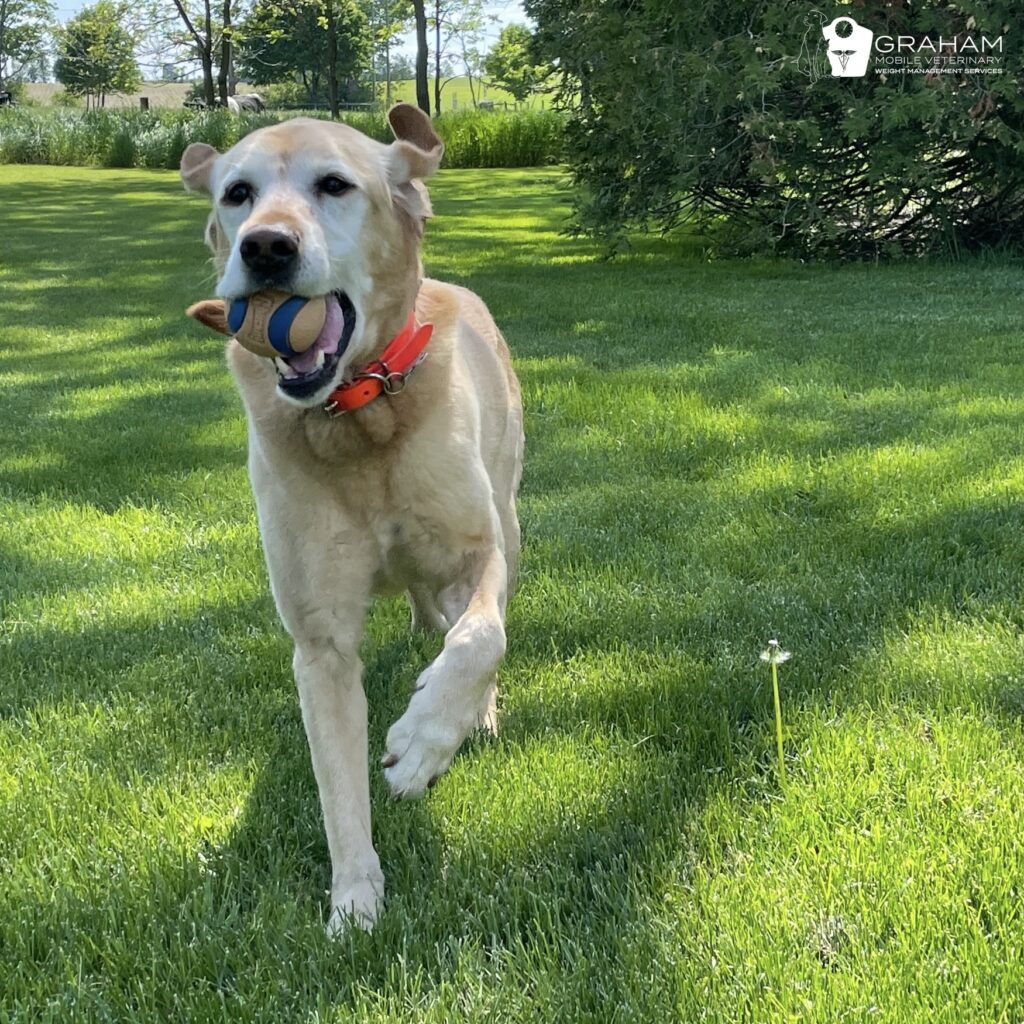
Graham Mobile Veterinary Weight Management Services offers tailored weight management programs for dogs and cats across Ontario. If you need further assistance with your pet’s nutritional plan, feel free to contact us directly!


0 Comments